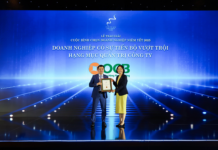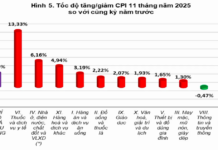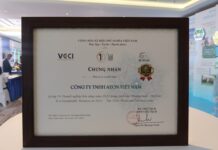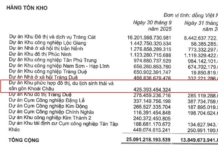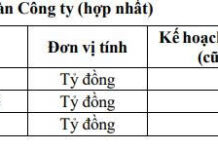Focusing on three priority sectors: cement, steel, and electricity
The Government has just announced that the Ministry of Industry and Trade will take charge and coordinate with other ministries and sectors to proactively engage in dialogues with partners in performing the task related to the European Union’s (EU) Carbon Border Adjustment Mechanism (CBAM).
The ministries are responsible for studying the possibility of expanding the scope of CBAM application, especially for agro-forestry products; researching support and exemption mechanisms suitable for Vietnam; continuing to monitor developments in partner countries such as the US and Canada regarding the application of CBAM; and studying, negotiating, and joining international forums and bilateral and multilateral frameworks to enhance the potential for cooperation and recognition by the international community regarding Vietnam’s policies and regulations related to carbon pricing.
Sharing at a workshop on carbon credits, Mr. Dang Thanh Long – Head of Training and Sustainable Development of Intertek Vietnam, said that in its ambition to become a carbon-neutral region by 2050, the EU established the CBAM according to Regulation 2023/956 of the Council and the European Parliament.
This mechanism is designed to prevent “carbon leakage” when EU businesses may transfer carbon-intensive production activities abroad to take advantage of looser standards. It creates a green mechanism for goods imported from outside the EU through a reasonable pricing system for carbon emissions generated during production, thereby encouraging emission reduction in the manufacturing process.
CBAM imposes carbon taxes on all goods imported into the EU market based on the greenhouse gas intensity of the production process in the country of origin.
Mr. Long himself has extensive experience working in a company specializing in assurance, testing, inspection, and certification. The six types of goods he mentioned are related to more than 10,000 businesses and are inputs in the three major sectors of energy, industry, and aviation participating in the EU ETS market.
The EU ETS has been implemented since 2005, requiring businesses in industrial sectors in the EU to pay for every ton of carbon emitted into the environment.

Steel production faces pressure to reduce greenhouse gas emissions according to the committed roadmap. Illustration: Hoang Ha |
Carbon tax is considered one of the most effective solutions to adjust annual carbon emissions in accordance with the Paris Agreement on Climate Change in 2015, signed by countries worldwide, Mr. Long shared.
Assessing the impacts of CBAM on Vietnam, the expert said that, overall, the mechanism’s impact on the entire economy is not significant. However, for specific industries and businesses, the decrease in export value is not negligible, increasing pressure on enterprises.
According to Mr. Long, when Vietnam has a carbon credit market, enterprises that have already paid carbon fees will be deducted for exports to Europe. Therefore, if the carbon market operates late, businesses will be at a disadvantage.
Thus, manufacturers in third countries need to calculate the “embedded” emissions in their export goods, including direct and indirect emissions.
From the perspective of giving advice to businesses participating in the carbon credit market, Mr. Dang Thanh Long said that the transaction price for one carbon credit in the market is very high and tends to increase over time.
For example, the price of one carbon credit in one ton of steel is currently trading at around 80-100 euros. By 2030, this figure could reach 300 euros, triple the current rate.
Among the six production forms affected by the CBAM mechanism, Mr. Long observed that there would be surplus businesses. Therefore, he suggested focusing on three priority sectors: cement, steel, and electricity. He estimated that about 200 businesses would be affected by the CBAM mechanism, so enterprises in these sectors need to plan early for adaptation.
Lack of a roadmap will result in inability to meet European requirements
In the draft Decree amending and supplementing a number of articles of Decree No. 06/2022/ND-CP dated January 7, 2022, of the Government, detailing the implementation of a number of articles of the Law on Environmental Protection regarding greenhouse gas emission reduction and ozone layer protection, the Ministry of Natural Resources and Environment cited the experience of countries that have operated carbon markets. In the initial phase, the government only allocates quotas for sectors with large emissions.
In addition, the EU has started applying CBAM to control greenhouse gas emissions and impose carbon taxes on goods imported into the EU, including iron and steel, aluminum, cement, electricity, hydrogen, and fertilizers.
Not only the EU but the US also plans to apply the CBAM mechanism to eight items related to Vietnam’s exports. At the same time, facilities are responsible for submitting periodic greenhouse gas inventory reports every two years.
The results of the greenhouse gas inventory are the basis for operating the emission quota trading market. Therefore, the timeline for quota allocation needs to follow a roadmap suitable for the time when the facilities submit the greenhouse gas inventory reports.
Therefore, the draft proposes a roadmap for quota allocation. In the first phase, quotas will be allocated to facilities with large emissions in three sectors: thermal power, iron and steel production, and cement production. It is expected that about 200 facilities will be allocated quotas in the first phase, accounting for about 45% of the total emissions of the facilities required to conduct greenhouse gas inventory reports.
Experts believe that domestic businesses are currently unfamiliar with building reports related to greenhouse gas emissions, let alone calculating emissions per product or commodity. Moreover, it is not just about products and goods manufactured in Vietnam but also about raw materials and fuels purchased from abroad.
For businesses unprepared and lacking a roadmap, it will be challenging to meet European requirements. Therefore, enterprises need to proactively build their environmental, governance, and social standards to raise awareness and implementation capacity to be ready for the transition when required.
Tam An
Project “Quality High-Yield Rice Cultivation” – The Big Game and the 10 Principles
On the morning of January 5th, in Kiên Giang province, Deputy Prime Minister Trần Lưu Quang presided over a conference to implement the Sustainable Development Project for 1 million hectares of high-quality, low-emission rice cultivation linked to green growth in the Mekong Delta region by 2030.
Businesses Lack Understanding of ETS and Carbon Market
Only 57.38% of businesses are currently preparing to build a greenhouse gas emission reduction plan, nearly 28% already have a greenhouse gas emission reduction plan, over 50% of businesses have heard of ETS and the carbon market but are not familiar with the basic operating principles, only 1.27% of businesses understand how ETS and the carbon market work…






